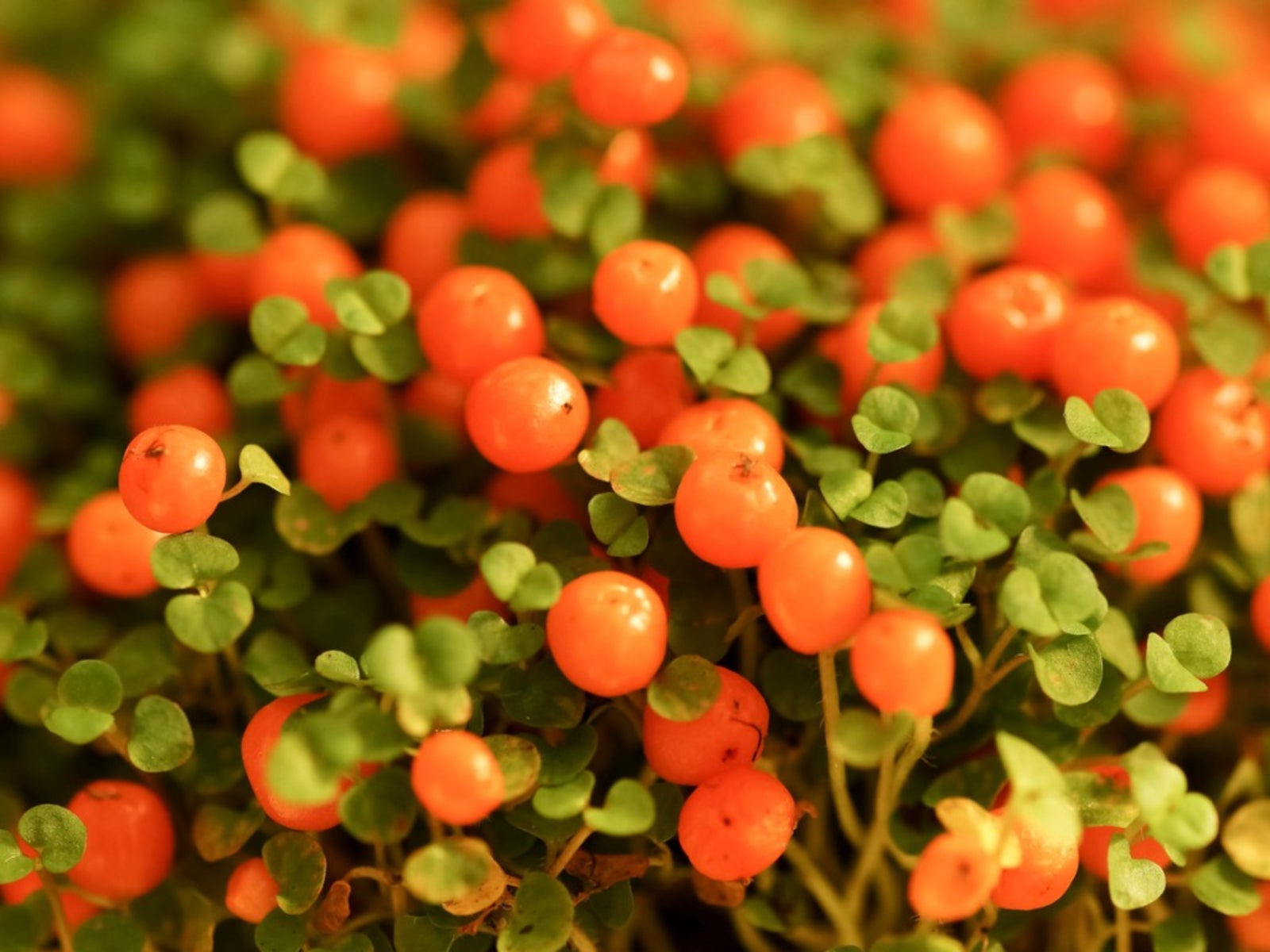Coral Bead Plant: Information On The Care Of Coral Beads

If you're looking for something a little more unusual to grow at home, consider growing coral bead plants. Grown indoors, or outside in the right conditions, this amazing little plant offers unique interest with its bead-like berries. In addition, the care of coral beads is easy.
What is Nertera Coral Bead Plant?
Nertera granadensis, otherwise known as coral bead or pincushion bead plant, can be a fussy houseplant which requires a bit of conscientious attention on the growers part. Coral bead plant is a low growing, about 3 inches (8 cm.) ornamental specimen hailing from New Zealand, eastern Australia, southeast Asia, and South America. This semi-tropical plant has a dense growth of tiny dark green leaves, which look remarkably similar to baby's tears (Soleirolia soleirolii). During the early summer months, the plant blooms in a profusion of small white flowers. Long lasting berries follow the blossoming stage and may completely cover the foliage in a riot of orange red color resembling that of a pincushion.
Growing Coral Bead Plants
The coral bead plant requires cool temperatures, 55 to 65 degrees F. (13-18 C.) and humidity. This plant has a shallow root system best planted in a shallow pot in a two parts peat moss-based potting mix with one part sand or perlite for good aeration. In addition, the plant prefers a bright semi-shaded exposure out of cold drafts and direct sun. A south-facing window is a good location away from the direct sunlight.
Care of Coral Beads
To entice blooming and the production of berries, move the coral bead plant outside in the spring but in a semi-shaded area to protect from the harsh sun. If the coral bead plant is kept too warm, it will be a foliage plant only, lacking in berries, although still attractive. Coral bead likes an evenly moist soil. As flowers bloom and berries begin to form in the springtime, increase your watering regime to ensure moist soil during summer months. Leaves should be misted daily during the bloom period until berries have begun to form. Do not mist too often, however, or the plant could rot. Growers of the coral bead plant should wait until the soil dries between watering during the winter and fall months and keep the plant in a place where the temperature is above 45 degrees F. (8 C.). Fertilize the coral bead monthly with a water soluble fertilizer diluted to half strength during the spring and summer months until it flowers. As the berries turn black and begin to die off, they should be gently removed from the plant. The care of coral beads may include propagating by gently pulling apart clumps (divide) and transplanting them into separate pots. This plant may also be grown from tip cuttings in the spring or from seed. Transplant or repot in the spring and only as needed.
Gardening tips, videos, info and more delivered right to your inbox!
Sign up for the Gardening Know How newsletter today and receive a free copy of our e-book "How to Grow Delicious Tomatoes".

Amy Grant has been gardening for 30 years and writing for 15. A professional chef and caterer, Amy's area of expertise is culinary gardening.
-
 Terrifically Tubular Flowers For Hummingbirds: 9 Tube-Flowered Plants To Attract Hummers
Terrifically Tubular Flowers For Hummingbirds: 9 Tube-Flowered Plants To Attract HummersGrowing tubular flowers for hummingbirds helps you create the optimum feeding conditions for your winged friends. Here are nine tubed delights for hummers
By Tonya Barnett
-
 How To Grow Hydroponic Tomatoes For Fresh Indoor Harvests – No Soil Required
How To Grow Hydroponic Tomatoes For Fresh Indoor Harvests – No Soil RequiredLearning how to grow tomatoes in water is easy and allows you to harvest fresh-home-grown produce in every season without any mess.
By Ellen Wells